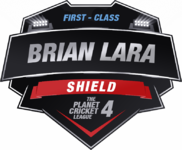qpeedore
SOTM Winner - July 2014
You ask the home captain to keep it low and you get this:
You have to send it upstairs, yes. But as the standing umpire you can say "I do not agree with this, mate."
THAT is keeping up the Spirit of the Game.
You have to send it upstairs, yes. But as the standing umpire you can say "I do not agree with this, mate."
THAT is keeping up the Spirit of the Game.













